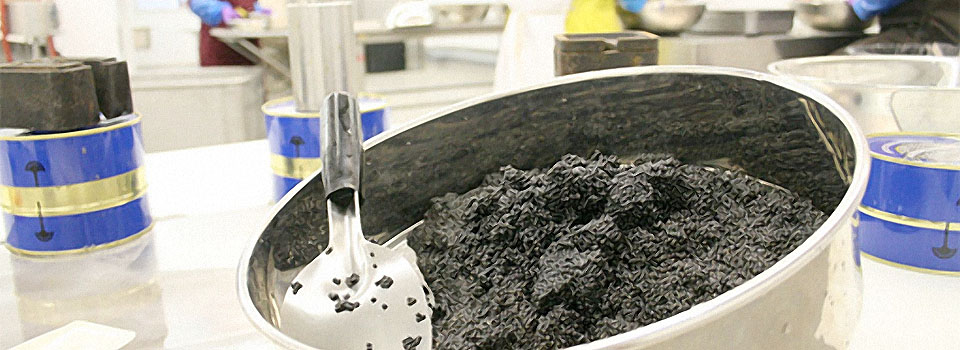Caviar is one of the world’s most prized delicacies, but overfishing has pushed wild sturgeon to the brink of extinction. A new, cost-effective and environmentally sustainable method for farming sturgeon pioneered by a University of Georgia professor has the potential to protect wild sturgeon populations while creating a lucrative agricultural commodity.
“Historically, farmed caviar has comprised two percent of the world’s market while 98 percent has come from wild sturgeon,” said Doug Peterson, associate professor of fisheries and aquaculture in the Warnell School of Forestry and Natural Resources. “We’re trying to flip the market so that in 10 years it will be 98 percent farmed and two percent wild. That’ll be good for wild sturgeon populations and for farmers.”
Domestic white sturgeon have been successfully farmed in Northern California for decades, but attempts to farm Russian species in North America have been stifled by high start-up costs and the tendency of farmed caviar to have a muddy or “off” taste. Peterson has created a new method of raising Siberian sturgeon that combines readily available aquaculture technology with a highly efficient filtration system and fresh spring water from the mountains of Northwest Georgia. The result is environmentally sustainable caviar whose taste rivals that of wild-caught.
The UGA Premium Siberian Sturgeon Caviar will be sold by Inland Seafood of Atlanta in containers that bear the UGA Athletics Association logo beginning this month. All proceeds support sturgeon conservation and aquaculture research at UGA. “This really is a win-win for consumers and for wild sturgeon populations,” said Bill Demmond, chief operating officer at Inland Seafood and a 1973 UGA graduate. “Not only is this an excellent-tasting product, but it’s also sustainably raised on a farm.”
Caviar has been traded for centuries and, despite the current economic downturn, Peterson says that the market for sustainable, high-quality farm-raised caviar will see tremendous growth over the next decade. The main challenge to the industry, Peterson said, has been the precipitous decline of wild sturgeon populations. He explained that longstanding problems such as the construction of dams that block migrations and environmental degradation have been exacerbated by the rampant overfishing that occurred following the abandonment of strict catch limits imposed by the former Soviet Union.
“My whole career has been focused on understanding the biology of these ancient animals-they were swimming the seas when the dinosaurs were roaming the Earth and even today, they remain largely unchanged,” Peterson said. “In just a flicker of geological time, we’ve nearly exterminated them. And one of the most important things we can do to help bring sturgeon back from the brink is to change the foundation of the caviar industry so that it relies on high-quality, sustainably farmed fish. The UGA caviar project has shown that there is no reason why we can’t save the sturgeon while spurring new economic opportunities in Georgia’s agricultural economy.”
